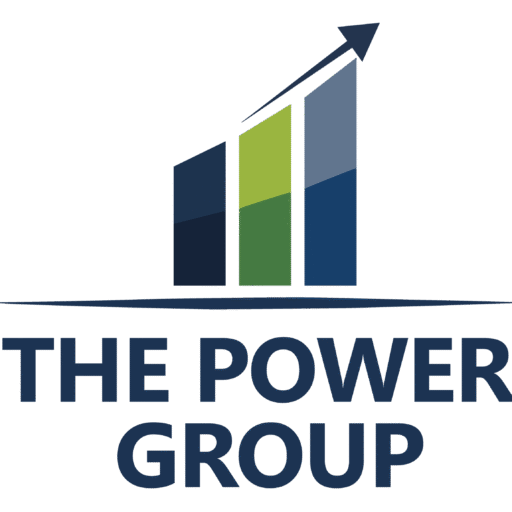Published by The Power Group | Toronto Sales Excellence Specialists
The difference between a good business and a great business often comes down to one critical factor: the quality of the sales team. While products, pricing, and marketing strategies matter enormously, it’s ultimately the sales team that converts prospects into customers, drives revenue growth, and builds the relationships that sustain long-term business success.
Yet building a high-performance sales team remains one of the most challenging aspects of business growth. The statistics are sobering: 57% of sales professionals miss their quotas annually, average sales rep turnover exceeds 35% per year, and the cost of a bad sales hire can exceed $240,000 when accounting for salary, training, lost opportunities, and replacement costs.
At The Power Group, we’ve worked with hundreds of Toronto-area businesses to build, train, and optimize their sales teams. Through our extensive experience across industries and company sizes, we’ve identified the key principles and practices that separate exceptional sales organizations from average ones.
The businesses that consistently outperform their competitors don’t rely on luck or individual star performers—they build systematic approaches to sales team development that create predictable, scalable results. They understand that sales success is both an art and a science, requiring the right combination of talent, training, systems, and culture.
This comprehensive guide reveals the proven strategies that successful businesses use to build sales teams that consistently exceed targets, maintain high retention rates, and drive sustainable revenue growth.
The Foundation: Understanding What Makes Sales Teams Successful
Before diving into hiring and training strategies, it’s essential to understand what actually drives sales team success. Many business owners focus on individual skills or personality traits while overlooking the systematic factors that enable consistent performance across entire teams.
The Myth of the “Born Salesperson”
One of the most damaging myths in sales management is the belief that great salespeople are born, not made. This misconception leads businesses to rely too heavily on individual talent while neglecting the systems, processes, and training that actually drive consistent results.
Research shows that while certain personality traits correlate with sales success, the most important factors are learnable skills, effective processes, and supportive organizational systems. The highest-performing sales teams combine natural ability with systematic training, clear processes, and strong management support.
The Components of Sales Team Excellence
High-performance sales teams excel in five key areas: clear role definition and expectations, systematic sales processes and methodologies, comprehensive training and ongoing development, effective management and coaching, and strong team culture and collaboration.
Each component reinforces the others, creating a multiplicative effect where the whole becomes greater than the sum of its parts. Teams that excel in all five areas consistently outperform those that focus on just individual talent or single interventions.
The Business Impact of Sales Team Performance
The financial impact of sales team improvement extends far beyond increased revenue. High-performance sales teams typically achieve 15-25% higher close rates, 20-30% shorter sales cycles, 35-50% lower turnover rates, 25-40% higher customer satisfaction scores, and 20-35% better profit margins through value-based selling.
These improvements compound over time, creating sustainable competitive advantages that become increasingly difficult for competitors to match.
Strategic Hiring: Finding the Right Sales Talent
The foundation of any high-performance sales team starts with hiring the right people. However, most businesses approach sales hiring reactively—waiting until they need someone immediately, then rushing to fill the position with whoever seems reasonably qualified.
Strategic sales hiring, by contrast, is proactive, systematic, and focused on finding candidates who will succeed in your specific environment rather than just those who have succeeded elsewhere.
Defining Your Ideal Sales Profile
Before beginning any hiring process, develop a detailed profile of what success looks like in your specific sales environment. This goes far beyond generic qualities like “motivated” or “experienced” to include specific competencies, experiences, and characteristics that predict success in your market, product complexity, sales cycle length, and organizational culture.
Consider factors like industry experience relevance, consultative versus transactional selling skills, hunter versus farmer orientation, individual contributor versus team collaboration preferences, and adaptability to your company’s stage of growth.
Competency-Based Interview Processes
Traditional sales interviews often focus on personality, likeability, and general experience rather than specific competencies that predict success. Competency-based interviewing uses behavioral questions and practical exercises to assess candidates’ actual abilities in critical areas.
Questioning techniques that reveal competency: Use behavioral interview questions that require candidates to describe specific situations, actions taken, and results achieved. Look for patterns of success that align with your requirements.
Role-playing and practical exercises: Include realistic sales scenarios that mirror your actual selling environment. Observe how candidates handle objections, build rapport, uncover needs, and present solutions.
Reference checking for performance data: Go beyond basic employment verification to gather specific performance data from previous employers. Ask about quota achievement, retention rates, and peer rankings.
Cultural fit assessment: Evaluate how candidates’ working styles, values, and career goals align with your organization’s culture and expectations.
Avoiding Common Hiring Mistakes
The most expensive sales hiring mistakes include over-weighting previous experience at the expense of potential, focusing on personality over competency, rushing the hiring process due to immediate needs, neglecting cultural fit in favor of skills alone, and failing to verify claimed achievements and results.
Take time to make hiring decisions correctly rather than quickly. The cost of a bad hire far exceeds the cost of a thorough hiring process.
Comprehensive Sales Training: Building Competency Systematically
Even naturally talented salespeople need systematic training to reach their full potential in your specific environment. Effective sales training goes far beyond product knowledge to include methodologies, skills, and ongoing development that creates consistent performance across the entire team.
Designing Effective Onboarding Programs
New sales hire onboarding sets the foundation for long-term success. Comprehensive onboarding should include company culture and values integration, detailed product and service knowledge, competitive landscape understanding, sales process and methodology training, CRM and sales tool mastery, territory and customer assignment, and shadowing experienced team members.
The goal is enabling new hires to have productive customer conversations within 30-60 days rather than leaving them to figure things out independently.
Core Sales Skill Development
While product knowledge is important, core sales skills are what actually drive results. Essential skills training includes prospecting and lead generation techniques, needs assessment and discovery questioning, consultative selling and solution presentation, objection handling and negotiation, closing techniques and follow-up processes, and relationship building and account management.
These skills should be taught systematically with practice opportunities, role-playing, and ongoing reinforcement rather than one-time training sessions.
Advanced Sales Methodologies
High-performance sales teams typically use proven methodologies that provide frameworks for consistent execution. Popular methodologies include SPIN Selling for consultative approaches, Challenger Sale for educational selling, Solution Selling for complex B2B environments, MEDDIC for enterprise sales qualification, and Value-Based Selling for premium positioning.
Choose methodologies that align with your sales environment and train the entire team consistently rather than allowing individual approaches that create inconsistent results.
Our sales training programs combine proven methodologies with customized approaches that address each organization’s specific challenges and opportunities.
Creating High-Performance Sales Culture
Culture might seem intangible, but it has measurable impacts on sales team performance. High-performance sales cultures create environments where top performers thrive, average performers improve, and low performers either develop or self-select out.
Elements of Winning Sales Cultures
Achievement and recognition focus: Celebrate wins publicly and create healthy competition that motivates performance while maintaining team collaboration.
Continuous learning and improvement: Encourage experimentation, learning from failures, and sharing best practices across the team.
Customer-centric mindset: Align team incentives and recognition with customer success rather than just activity or short-term results.
Collaborative team environment: Foster knowledge sharing, peer mentoring, and mutual support rather than internal competition that undermines overall performance.
Professional development opportunities: Provide clear career paths and skill development opportunities that retain top performers while attracting new talent.
Managing Different Performance Levels
Every sales team includes performers at different levels, and effective management requires different approaches for each group. Top performers (typically 20% of the team) need autonomy, advanced challenges, and leadership opportunities. Average performers (usually 60-70%) need coaching, skill development, and systematic support to reach higher levels. Low performers (bottom 10-20%) need intensive coaching, clear improvement timelines, or transition out of sales roles.
The key is identifying which category each team member falls into and providing appropriate support and expectations for their situation.
Building Accountability Systems
High-performance cultures balance support with accountability. Effective accountability includes clear performance expectations and metrics, regular one-on-one coaching sessions, systematic pipeline and activity tracking, consequence systems for consistent underperformance, and recognition systems for achievement and improvement.
Accountability should feel supportive rather than punitive, focused on helping people succeed rather than catching them failing.
Sales Management: The Critical Success Factor
Sales management quality is often the single biggest determinant of sales team success. Great sales managers act as coaches, strategists, and culture builders who enable their teams to perform at levels they couldn’t achieve independently.
The Role of the Modern Sales Manager
Today’s sales managers need to be part coach, part analyst, part strategist, and part psychologist. They must provide individual coaching and development, analyze performance data and market trends, develop territory and account strategies, maintain team motivation and morale, and bridge between sales and other organizational functions.
This multifaceted role requires skills that go far beyond being a top individual contributor, which is why promoting top salespeople to management without additional training often fails.
Effective Coaching Techniques
The best sales managers are exceptional coaches who help their team members improve continuously. Effective coaching includes regular one-on-one sessions focused on development rather than just performance review, joint customer calls that provide real-time coaching opportunities, role-playing and skills practice that reinforces training, data analysis that identifies improvement opportunities, and career development planning that retains top talent.
Coaching should be ongoing and developmental rather than episodic and corrective.
Performance Management and Analytics
Modern sales management requires sophisticated use of data and analytics to identify trends, predict results, and optimize team performance. Key analytics include individual and team performance trending, pipeline quality and velocity analysis, activity correlation with results, customer satisfaction and retention metrics, and competitive win/loss analysis.
Use this data to make informed decisions about training needs, territory adjustments, process improvements, and individual development plans rather than relying on intuition alone.
Compensation and Incentive Design
Compensation structure significantly influences sales team behavior, motivation, and retention. Effective compensation plans align individual incentives with business objectives while providing motivation for different performance levels.
Balancing Base and Variable Compensation
The optimal balance between base salary and variable compensation depends on your sales cycle length, deal complexity, market competitiveness, and cash flow considerations. Longer sales cycles typically require higher base salaries to provide financial stability, while transactional sales can support higher variable percentages.
Most successful B2B sales roles use 60-70% base salary with 30-40% variable compensation, while transactional roles might reverse this ratio.
Incentive Structure Design
Individual versus team incentives: Balance individual achievement recognition with team collaboration by including both individual quotas and team objectives in compensation plans.
Short-term versus long-term focus: Include both quarterly/annual targets and longer-term objectives like customer retention or account growth to prevent short-sighted behavior.
Activity versus results incentives: While results should dominate compensation, include activity-based components that encourage consistent effort and skill development.
Tiered achievement levels: Create accelerating commission rates or bonuses that provide increasing rewards for higher performance levels.
Non-Monetary Motivation
High-performance sales teams use recognition and advancement opportunities alongside financial incentives. Effective non-monetary motivators include public recognition and awards, professional development and training opportunities, increased autonomy and responsibility, career advancement pathways, and exclusive access to high-profile accounts or projects.
Our compensation design consulting helps businesses create incentive structures that attract top talent while driving the behaviors that create sustainable business success.
Technology and Sales Enablement
Modern sales teams require sophisticated tools and systems to compete effectively. However, technology should enhance human capability rather than replace relationship building and consultative selling skills.
Essential Sales Technology Stack
Customer Relationship Management (CRM) systems: Centralize customer data, track interactions, and manage pipeline visibility across the organization.
Sales automation and productivity tools: Streamline repetitive tasks like email sequences, appointment scheduling, and proposal generation.
Communication and collaboration platforms: Enable effective internal communication and customer interaction across multiple channels.
Analytics and reporting systems: Provide insights into individual and team performance, pipeline health, and market trends.
Training and onboarding platforms: Deliver consistent, scalable training experiences that accommodate different learning styles and schedules.
Implementation Best Practices
Technology adoption fails when it’s imposed without proper training and change management. Successful implementation includes comprehensive training on new systems, clear policies about usage expectations, integration with existing workflows and processes, ongoing support and optimization, and regular evaluation of tool effectiveness and usage.
Focus on tools that actually improve sales effectiveness rather than just providing more data or features.
Measuring and Optimizing Sales Team Performance
What gets measured gets managed, and high-performance sales teams use comprehensive metrics to drive continuous improvement. However, measurement should focus on leading indicators that predict future success rather than just lagging indicators that report what already happened.
Key Performance Indicators (KPIs)
Individual performance metrics: Quota achievement, pipeline generation and quality, activity levels and consistency, customer satisfaction scores, and skill development progress.
Team performance metrics: Overall revenue achievement, sales cycle length and trends, win rate and competitive analysis, customer retention and expansion, and team retention and satisfaction.
Organizational alignment metrics: Sales and marketing qualified lead ratios, customer acquisition cost trends, lifetime value optimization, and forecast accuracy improvement.
Creating Performance Improvement Systems
Use performance data to identify coaching opportunities, training needs, process improvements, and resource allocation optimization rather than just evaluating past performance.
Regular performance reviews should include achievement recognition, improvement area identification, skill development planning, goal setting and resource allocation, and career development discussion.
Building Your High-Performance Sales Team Action Plan
Understanding these principles is valuable, but implementation is where results happen. Creating a high-performance sales team requires systematic planning, resource allocation, and commitment to long-term development rather than quick fixes.
Assessment and Gap Analysis
Start by honestly evaluating your current sales team performance and identifying the biggest opportunities for improvement. Analyze current hiring practices and results, training programs and effectiveness, management quality and consistency, compensation competitiveness and alignment, technology utilization and optimization, and culture and team satisfaction levels.
Prioritize improvements based on potential impact and implementation difficulty, focusing on high-impact changes that can be implemented quickly to build momentum.
Implementation Timeline
30-60 Days – Foundation Building: Assess current team performance and needs, define ideal candidate profiles and competencies, audit existing training and onboarding programs, and establish baseline performance metrics.
90 Days – System Implementation: Launch improved hiring processes, implement comprehensive training programs, establish regular coaching and management systems, and optimize compensation and incentive structures.
6-12 Months – Culture and Optimization: Build high-performance team culture, refine systems based on initial results, expand successful practices across the organization, and plan for longer-term team scaling.
Measuring Return on Investment
Track the business impact of sales team improvements through metrics like revenue growth and quota achievement, reduced turnover and hiring costs, improved customer satisfaction and retention, faster new hire productivity ramp-up, and enhanced competitive positioning and market share.
Most businesses see measurable improvements within 90-120 days of implementing systematic sales team development programs, with full ROI typically achieved within 12-18 months.
Our sales team development programs provide comprehensive support for businesses ready to build high-performance sales organizations that drive sustainable competitive advantage.
Your Sales Excellence Journey Starts Today
Building a high-performance sales team isn’t about finding magical talent or implementing single solutions—it’s about creating systematic approaches to hiring, training, managing, and retaining sales professionals who consistently deliver exceptional results.
The businesses that dominate their markets understand that sales success is predictable when the right systems, processes, and culture are in place. They invest in their sales teams as strategic assets rather than treating them as necessary costs, and they reap the rewards through sustained revenue growth, market leadership, and competitive resilience.
Your sales team represents your most direct path to revenue growth and market success. Every day you delay implementing systematic sales team development is a day your competitors might gain advantages that become increasingly difficult to overcome.
The strategies outlined in this guide represent proven approaches that successful businesses use to build sales organizations that consistently exceed targets while maintaining high satisfaction and retention rates. But reading about these strategies won’t improve your sales results—only implementation will.
Start by choosing the areas where your sales team has the greatest improvement opportunities. Whether that’s hiring better candidates, improving training programs, enhancing management effectiveness, or optimizing compensation structures, focus on systematic improvements that create lasting change rather than quick fixes that provide temporary results.
Remember that building high-performance sales teams is an ongoing process, not a one-time project. The best sales organizations continuously evolve their approaches based on market changes, performance data, and team feedback, always looking for ways to improve their competitive advantage through sales excellence.
Your customers, your team, and your bottom line all benefit when you commit to building a truly high-performance sales organization. The only question is whether you’re ready to make the systematic changes needed to achieve sales excellence that drives sustainable business success.
Don’t wait for a sales crisis or missed targets to focus on team development. Start building the sales organization today that will drive your business success for years to come.





